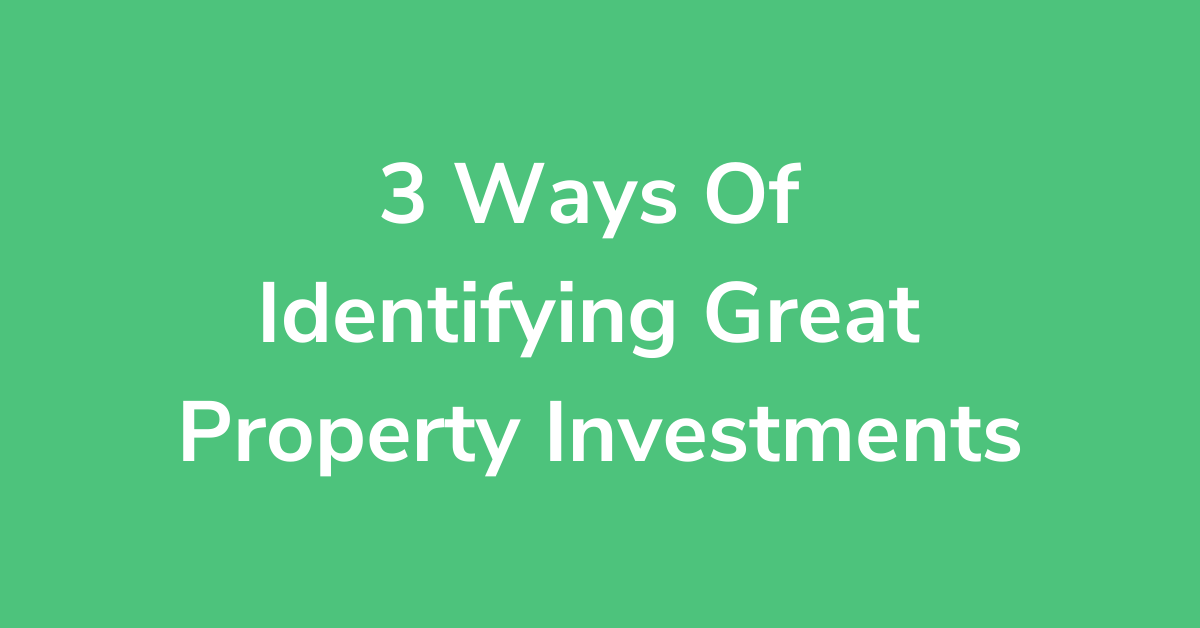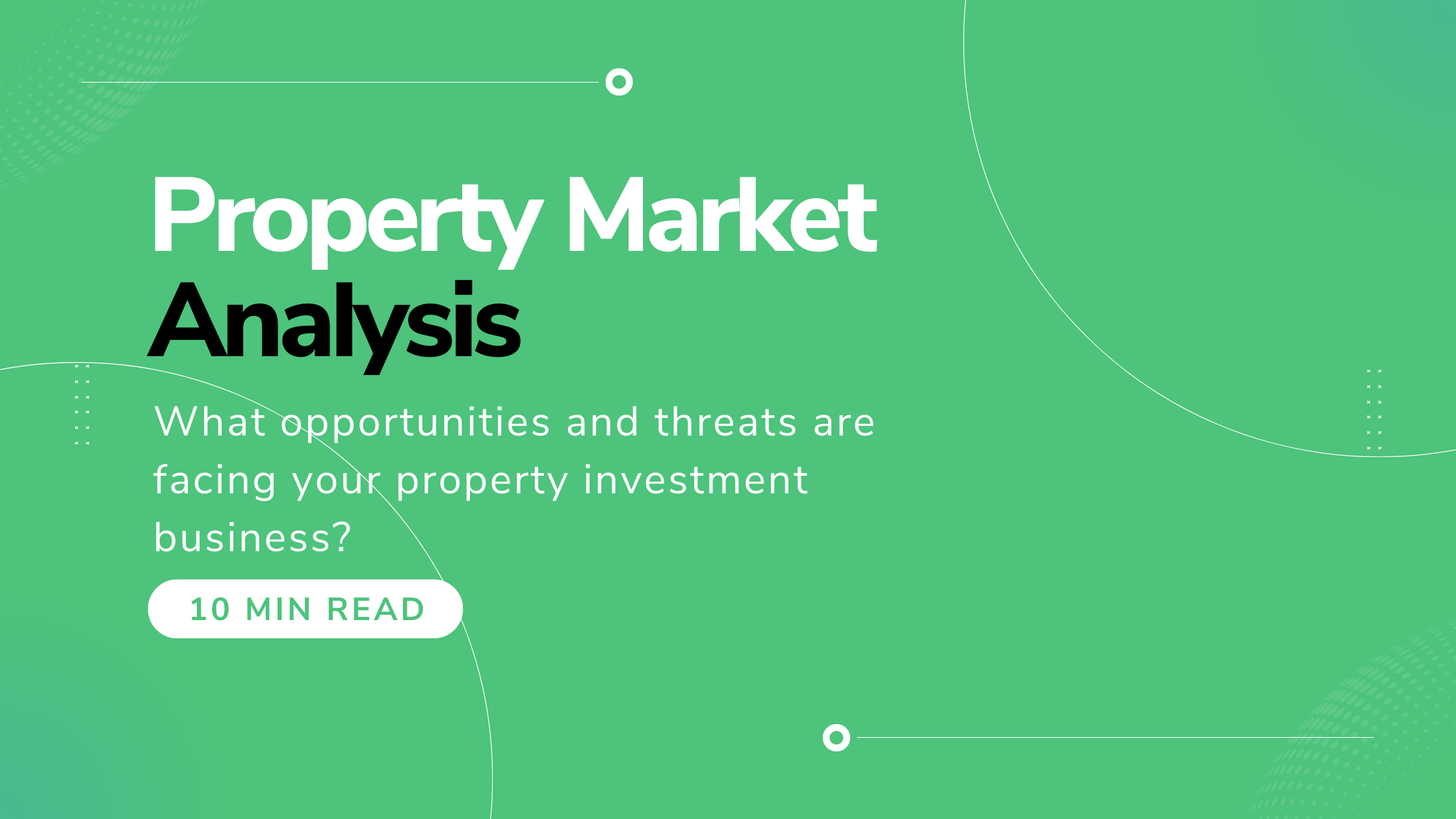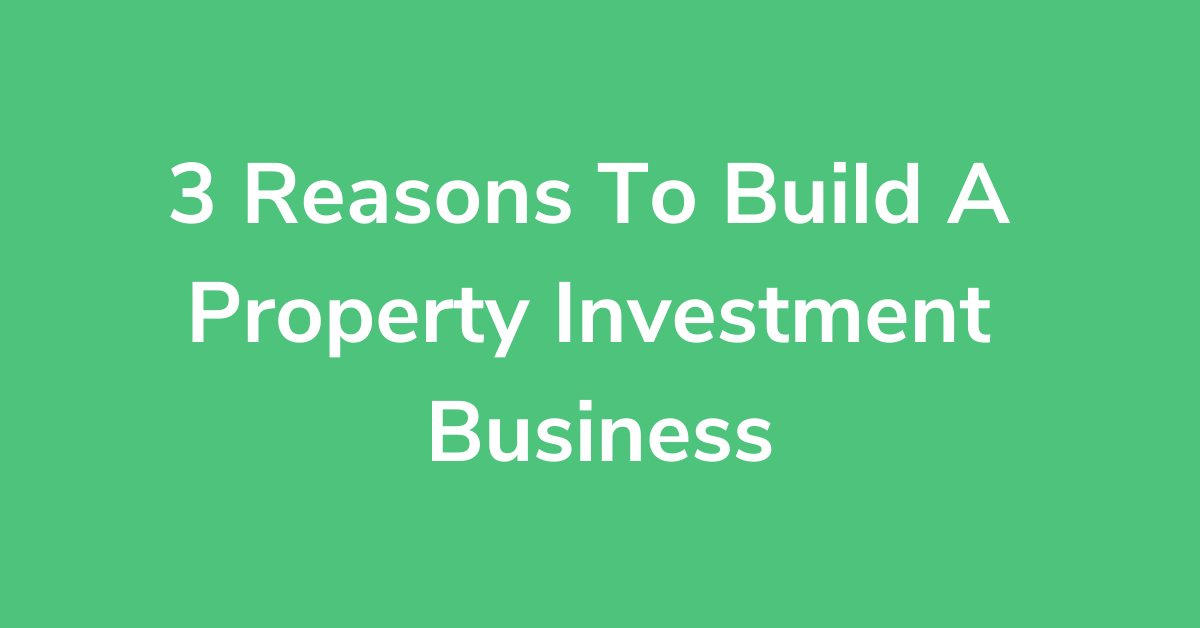3 Ways Of Identifying Great Property Investments

In order to build a successful property investment business, you will need access to a ready supply of great deals.
This presents a very significant challenge for a lot of property investors, especially when operating in very competitive market conditions. Under such conditions, house prices are unusually elevated and often selling very quickly, for more than the asking price.
How then, is it possible to identify great deals, under such challenging circumstances?
The key lies in utilising a combination of knowledge, creative thinking and the power of compound effects.
By continuously educating yourself on the most creative ways of identifying property investment opportunities and surrounding yourself with experts in this field, you will have a major competitive advantage over the vast majority of people, who are out there looking for deals.
So .... let's jump into it.
Find creative ways to add value
There are so many creative ways of adding value to properties, which the majority of people will never see, when looking at a particular building.
Your job is to use your knowledge, powers of creative thinking and your network of expert contacts, to see opportunities, which others don't see.
Here are a few examples to get your creative juices flowing, when you're next looking at a property. Ask yourself whether you could:
- Split an existing freehold into multiple leases
- Convert an existing building into multiple smaller dwellings
- Add value to the building by obtaining planning permission
- Utilise some of the land around the building to create one or many new dwellings
- Extend the property upwards, backwards and / or sideways
- Change the use class of part or all of the building, to increase the value per square metre
These are just a few high level examples, all of which you can explore in more detail, to see whether they could be used to add value to the particular building you're looking at.
The more creative ways you find of adding value to a building, the more likely you are to be able to outbid the competition, which leads me nicely onto my next point.
Think beyond Below Market Value
There are a few different types of buyer out there, with whom you are competing.
Some buyers are not at all concerned about getting value for their money. Terms like Projected Return On Investment and Below Market Value are simply not in their vocabulary.
Others are completely fixated on buying properties Below Market Value. For them, this is the holy grail.
If your only strategy for adding value to a building, is to buy it below market value, you're going to have a very hard time competing against these buyer types. Not only that, under hot market conditions, you're very unlikely to build a sustainable pipeline of great property investment opportunities.
If you can find and acquire something below market value then great, but don't let this strategy blind you to other ways of adding value.
If you manage to identify one or many other ways of adding value to a building, you will likely be able to engineer a far higher Gross Development Value (GDV) than your competition. Accordingly you will have far more profit margin to work with. This will enable you to offer more than your competition and in many cases, rather than needing to buy below market value, you will be able to offer more than the asking price and still make the deal work.
Do you think you are more or less likely to build a sustainable pipeline of deals, if you're consistently able to offer more than the asking price?
Compound value by combining strategies
If you're able to identify one way of adding value to a building, which goes beyond buying it below market value, that's great and you're already in a far stronger position than most of your competition.
If you're able to identify multiple ways of adding value however and you're able to combine them together, you could have a very interesting opportunity on your hands.
Let's say for example you're able to add value by obtaining a new set of planning permissions, whilst also being able to create a new dwelling on the land surrounding the building. Imagine the impact this will have on the Gross Development Value (GDV) and accordingly what you may be able to pay for the building in the first place.
Another example might be to combine permitted development rights to change the use class of part of the building, whilst also taking advantage of air rights to create two new stories using modern methods of construction.
These are the powerful compound effects I was referring to earlier.
The more complementary ways you can identify, for adding value to a building, the more likely you are to building a sustainable pipeline of great property investment opportunities.
Needless to say that the Stacked platform can support you with all aspects of:
- Conducting your due diligence
- Stacking the deal, using all these creative strategies
- Financing the deal in creative ways
.png?width=250&height=60&name=Stacked%20(2).png)

